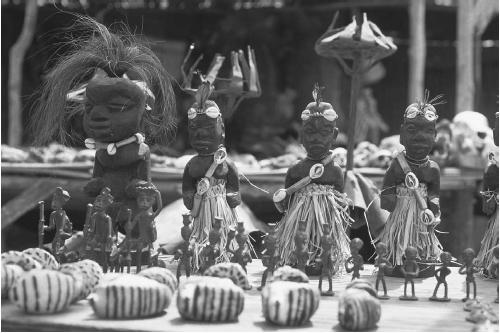Tribal Empowerment
Fetishes
Fetishes (from the Portuguese word feitio, meaning artificial, or false) are distinguished from amulets and talismans by supposedly being endowed with human thoughts or feelings, or infused with a spirit. Drawings of animals on cave walls by prehistoric people were believed to infuse humans with the qualities of strength, speed, or other attributes associated with that animal. Today, fetishes carved of wood or stone by Native Americans of the Southwest have the same purpose. Fetishes carved in the likeness of an animal are given as gifts, with the recipient supposedly gaining some of the qualities of that animal. Fetishes from the Zuni tribe are particularly sought after in modern times, sustaining a tribal tradition stretching back in time for centuries.

Fetishes are important in the vodoun religion, originating in western Africa as small pouches or chests, or items worn as amulets, and evolving into doll fetishes that were believed to possess the spirit of the person on whom the doll was modeled. That mystical practice of vodoun practitioners was misrepresented and generally overdramatized as a horror element of voodoo in popular culture, in movies, television shows, and fiction.
Egyptians had dolls called shawabtis that were occasionally buried with the dead for their use in the afterlife. A central African tribe called the Bakongo had a fetish called Nkosi. Unlike an amulet, which works automatically to bring luck or ward off misfortune, the Nkosi was believed to work only through an elaborate ceremony, where its power to identify the party guilty of a crime was coaxed and sometimes forced into action. That is the nature of fetishes, and what distinguishes them from amulets and talismans. Fetishes have personalities that must be appealed to in some way in order for them to work; amulets, invested with power based on the material and inscriptions, are supposed to work automatically; and talismans work automatically if they were crafted following a specific, ritualistic practice.

Comment about this article, ask questions, or add new information about this topic: